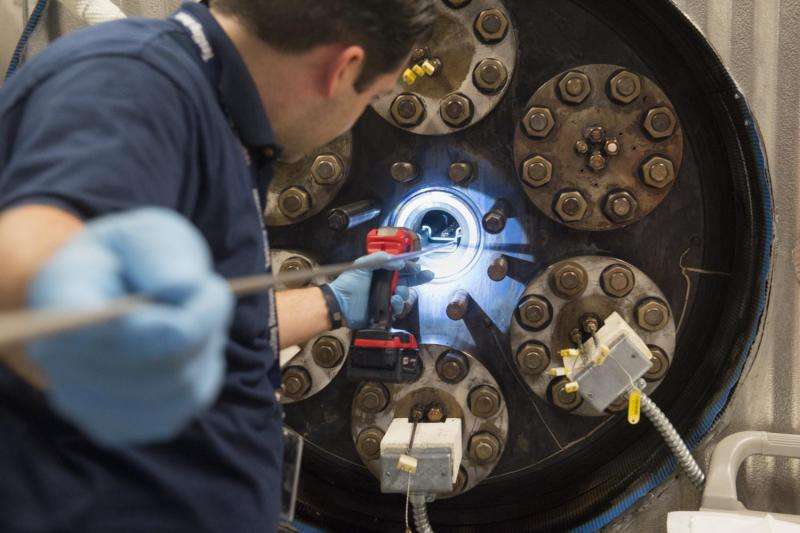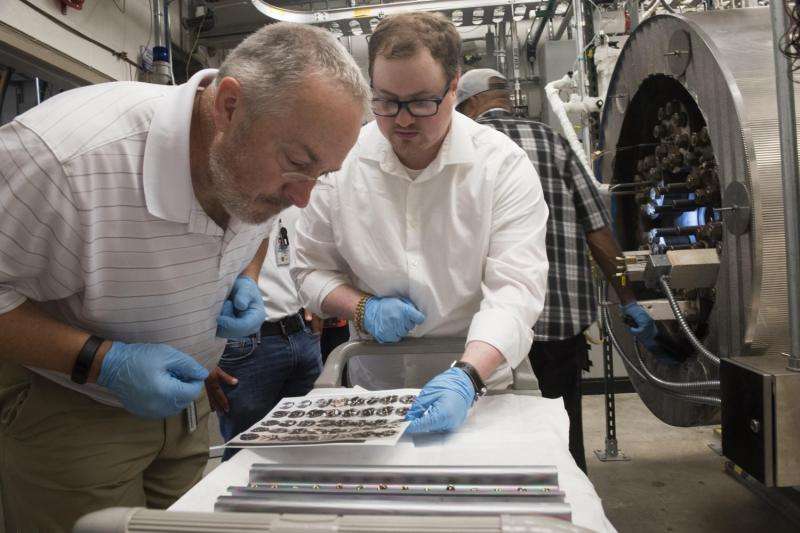NASA's Venus chamber breaks record with completion of 80-day test

After an 80-day test at Venus surface conditions and a two-week cooling period, samples were removed from Glenn's Extreme Environments Rig (GEER) at NASA's Glenn Research Center in Cleveland, July 13, nearly doubling the facility's previous duration record of 42 days.
This new record puts researchers one step closer to understanding the effect a long-duration exposure to Venus' atmosphere has on materials. With this knowledge, technology can be developed to allow for future missions to our sister planet.
Researchers from Case Western Reserve University and GEER's engineers worked together to expose 13 minerals, 11 rocks and nine samples of glass to Venus' blazing temperature, high pressure and atmospheric makeup.
The goal is to catalog what reactions take place, further understand how the materials react and which may be viable for future Venus missions.
"Venus is a hellhole, to put it mildly," said Dr. Ralph Harvey, Case Western Reserve University Planetary Materials professor. "We're not going to solve all of Venus' problems, but we're going to create a new starting point that may let us and others get there in the future."
GEER, a world class ground-based test rig, underwent improvements last spring to enhance the capabilities of the chamber.
"The GEER process system was redesigned to provide a more robust system with even higher accuracy," said Leah Nakley, GEER's lead test engineer. "The 80-day test confirmed that it can easily accommodate long duration tests."

GEER's improvements included adding real-time gas analysis, which allows engineers to monitor changes in gas chemistry and inject gases individually to adjust the composition at any point during a test.
These modifications enable researchers to make informed decisions regarding the atmospheric requirements for their particular test, ensuring the most accurate results.
"Every test that comes through is unique and the results add one more piece to the puzzle," said Nakley. "We are confident that GEER will help scientists and researchers develop concepts and technology for future missions to Venus."
Provided by NASA




















